‘People would be happy to spend the night in a hotel, but are not willing to pay 8–9k for a room’
In Nizhnekamsk, there is a shortage of hotels; across the entire Zakamsk region — a lack of glampings; prices are approaching those in Moscow, while in Yelabuga internal inflation in the services sector is accelerating through salaries in the SEZ
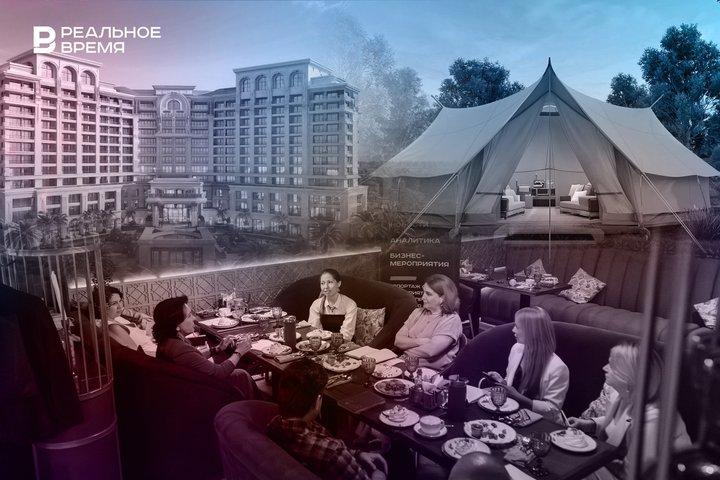
Glampings and countryside resorts in the Zakamsk region are 80–95% full. A clear increase in demand for these types of accommodation is evident. Even business travellers try to stay here during their trips, but for them the main reason is the simple lack of business hotels in Yelabuga and Nizhnekamsk. The trend towards a more conscious approach to health has rejuvenated the clientele of sanatoriums and led to a rise in demand for their services. In Naberezhnye Chelny, a slight decline in hotel occupancy has been noted, but market players remain calm — it is a natural fluctuation. Hoteliers are being forced to raise prices due to increasing operational costs, but there is a limit to how much guests are willing to pay. These and other trends in the hotel and wellness business in the Zakamsk industrial zone are covered in the first part of the report from the themed business brunch by Realnoe Vremya.
Occupancy of glampings and countryside resorts in the Zakamsk region reaches up to 90% even on weekdays
Ekaterina Yegorova, curator of investment projects at the Directorate for Natural Areas of the Institute for Urban Development of Tatarstan, shared that, according to 2024 statistics, the average occupancy rate for countryside accommodation remained around 50%. There is a clearly defined seasonality: a drop in spring and autumn, with peak occupancy during the winter holidays and summer season. The average cost of one day’s stay in 2024 amounted to 11,300 rubles (in 2023 it was 8,700 rubles).
“We can clearly see that properties with a well-defined concept are in higher demand. Concept is everything when it comes to countryside recreational facilities. An attractor, a tourist product, is usually created within the hotel itself. It is becoming increasingly difficult to sell just accommodation in cottages. A well-developed product has a positive impact not only on occupancy, but also on pricing,” explained Ekaterina Yegorova. “Naturally, the highest price levels remain within the Kazan agglomeration, where the largest number of properties is concentrated. In Zelenodolsky and Laishevsky districts alone, there are 12 countryside resorts each, and in Verkhneuslonsky district — 10.”

As for the Zakamsk region, there are no properties registered with the Directorate in the Nizhnekamsk district, while the Tukaevsky district has three. A competition has been held recently for subsidies to support modular housing, and two new projects are set to be developed in the Zakamsk area — Kamsky Mayak within the Nizhnyaya Kama National Park, and a large countryside hotel with more than 150 rooms, Kamskaya Gavan, in Kamskiye Polyany. Another project in Zakamsk, the Kuzkey motor court, will expand its room capacity with the help of a subsidy.
As for 2025, there is no official data yet, but according to Ekaterina Yegorova, based on conversations with businesses, occupancy at countryside hotels and glampings was lower for many at the end of winter and during spring compared to previous periods. However, it is still too early to say that this niche in Zakamsk is oversaturated. Facilities with developed infrastructure and a range of additional services are reaching occupancy rates of up to 89%. These include properties offering thermal baths, year-round bathhouse complexes, and swimming pools — such amenities help to offset seasonality and poor weather. Currently, such offerings face little competition.
Irina Pylaeva, director of the Belaya Dacha holiday base, says that occupancy at her facility has slightly declined compared to 2024. The recent cancellation of key summer events — the Boris Berezovsky music festival and the Yelabuga fair — has had an impact. There is no pronounced seasonality in Belaya Dacha’s operations, as the base mainly focuses on renting out houses for banquets, birthdays, weddings, and celebrations.
“It's clear that people have started to cut back on spending, but I believe that's because it's a tough year for everyone. Still, even with a slight dip this year, our occupancy reaches up to 75%, even on weekdays,” says Irina Pylaeva.
Galina Orekhova, manager of the countryside club Art House, explains that her property was built as a premium-format glamping site and has been operating since August 2024. During the winter period, the club had an occupancy rate of around 60–70%, and in summer — already 70–85%. “People in our city want to rest in style, in clean, new, modern houses with designer interiors and beautiful panoramic views. That’s what determines the pricing — high-quality materials combined with hotel-level comfort, just two kilometres from the city. We’re all familiar with A-frame triangle houses for two or three guests — they’re becoming a bit outdated. We decided to stay ahead of the curve by building a countryside club in the Barnhouse style. The price ranges from 30,000 to 40,000 rubles per night, and the number of guests can be increased to 15 without compromising comfort — a major advantage when booking.”
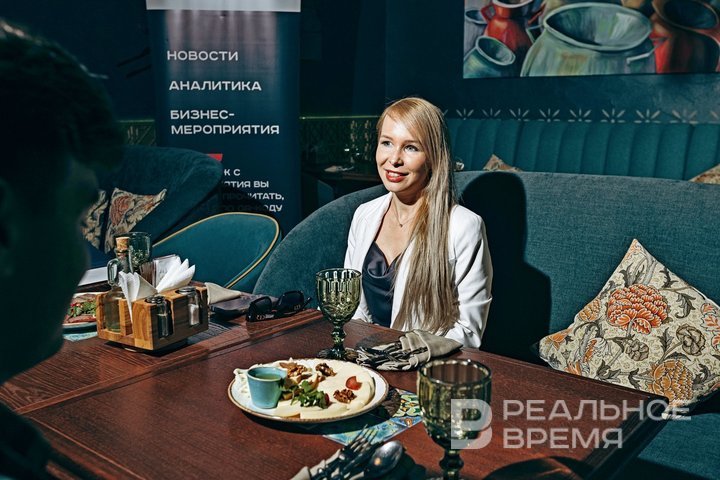
Evgeny Levashov, head of the Usadba Bagryazh holiday base in the Tukaevsky district, says that 40% of his guests come from Nizhnekamsk, while a quarter of the occupancy is provided by visitors from Chelny. This year, the base launched four so-called spheres — round glamping-style houses — and in a few weeks, three modular houses will open. Each sphere is designed for a family of two adults and two children, fully equipped for a comfortable stay, and includes an open-air hot tub for bathing. The modular houses will feature a sauna. The current occupancy rate is around 80%.
Demand for sanatorium services is on the rise
Elena Shuraleva, director of the Zhemchuzhina sanatorium, recalls that three years ago she took over the facility when it was burdened with multimillion-ruble debts, on the brink of bankruptcy, and with an occupancy rate of just 12%. Today, the occupancy has reached 95% year-round. Guests come to the sanatorium from all over Russia — from Kaliningrad to Khabarovsk. The health resort has its own medicinal water and offers treatment for disorders of the nervous, endocrine, musculoskeletal systems, and connective tissues, as well as other conditions.
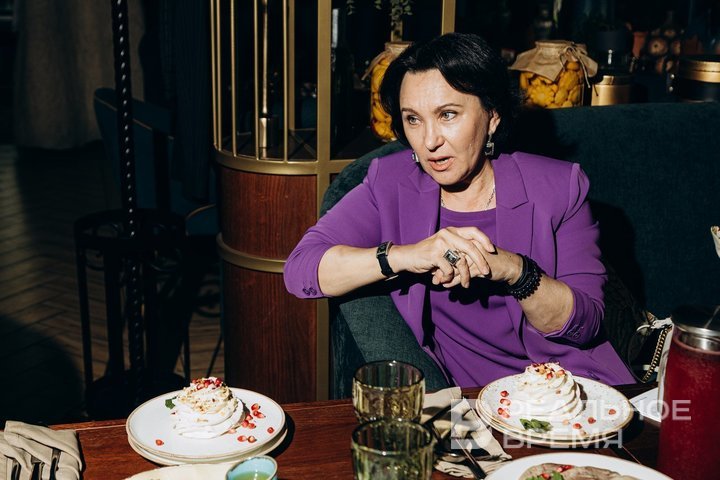
According to the speaker, demand for sanatorium services has not just increased recently — it has soared. Moreover, the age demographic of visitors has noticeably shifted towards younger people, reflecting the broader trend towards a healthy lifestyle. If three years ago the average guest age was 68, it is now 51.
In the past, sanatorium stays were typically booked for 21 days, but now, due to guests’ busy schedules, the optimal course of treatment is calculated at 10 to 14 days. The treatment program has been adjusted to this reality.
“The sanatorium has its own development strategy through 2035. However, for effective operation, the sanatorium needs not only a strategy but also its constant analysis to ensure it aligns with current market conditions. Without this, neither successful activity nor maintaining its market segment in sanatorium and resort services is possible. The financial support for implementing the strategy comes from our own funds. The sanatorium has no sponsors or investors. We operate on full self-sufficiency. The sanatorium is currently undergoing renewal: we are renovating the room stock and its equipment, expanding the range of medical services, and have improved the quality and variety of food,” Shuraleva explained.
“The current year has shown a slight decline in average occupancy compared to previous periods”
Lyudmila Lavrentyeva, manager of the KamaRooms hotel complex, describes the situation with demand in the urban hotel sector. Naberezhnye Chelny is hard to call a tourist city — business trips still dominate here. This means hotel occupancy usually peaks during the business season, starting from autumn. Summer has typically been less busy. However, in recent years there has been a surge in transit tourism across the country — people from neighbouring regions travel in summer and stop over in Naberezhnye Chelny along the way.
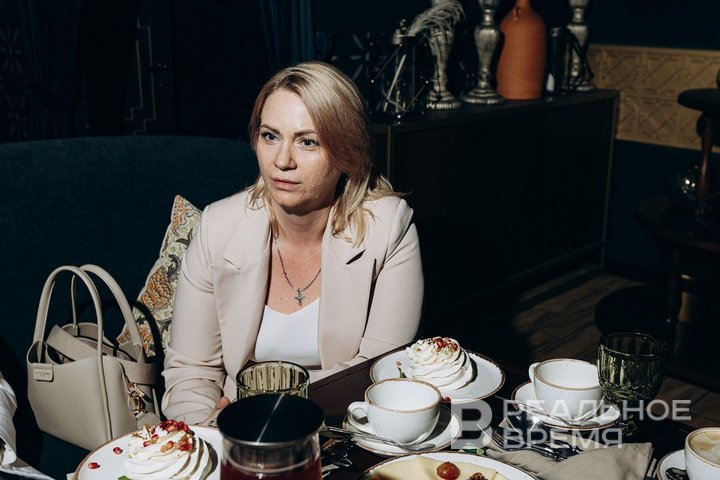
In 2025, hoteliers are noting a decline compared to previous periods, which Lyudmila Lavrentyeva explains:
“Throughout the current year, our average occupancy has been slightly lower than in 2023. However, many hoteliers anticipated this: after any peak, a decline is expected. The entire industry was discussing this as early as February. This happens for various reasons. Like everyone in the sector, we had to adjust our pricing policy in response to increased tax burdens, rising payroll costs, and other expenses. However, we are aware of the payment capacity limits of our target audience — which is why we adapted our pricing strategy, allowing us to optimise occupancy. This has once again confirmed that price remains a key factor for guests.”
In Nizhnekamsk, demand exceeds supply; in Naberezhnye Chelny, there is sufficient accommodation; while in Yelabuga, there are not enough hotels to meet the needs of both business travellers and tourists
Lyudmila Lavrentyeva explains that the management company of the Kama Rooms hotel has also opened a hostel in Nizhnekamsk. She attributes this business decision to the shortage of accommodation options in the petrochemical city. Currently, there are several hotels in Nizhnekamsk, but participants at the brunch believe that prices are excessive for a small industrial city.
“It is objectively clear to everyone why the price levels are as they are. In Nizhnekamsk, demand truly exceeds supply; there are few options for comfortable accommodation, especially considering the large tourist flow to the Nizhnekamsk thermal baths.”
In Naberezhnye Chelny, however, she believes there is enough accommodation available. Peak occupancy usually occurs during the business season, typically from Tuesday to Thursday. On weekends, however, there is a ‘dip’ — meaning the situation in Naberezhnye Chelny hotels is directly opposite to that of countryside resorts and glampings, which experience high occupancy at weekends.”
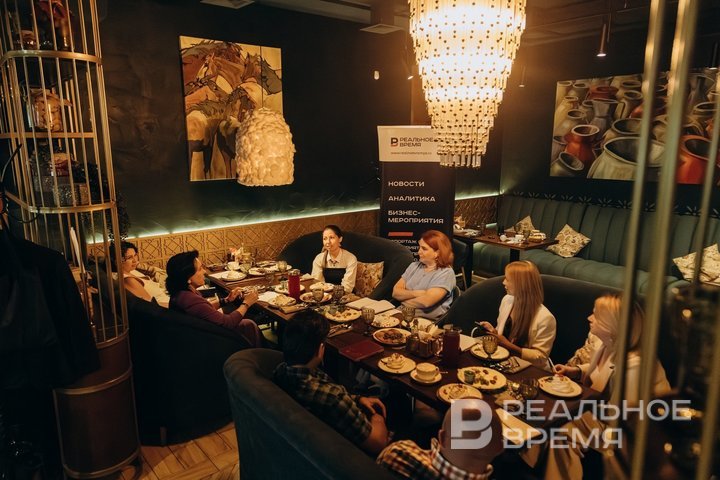
In Yelabuga, the attendees believe that additional accommodation facilities would also be beneficial: besides a significant tourist flow, many business travellers and visitors come here for the Alabuga Special Economic Zone. Existing hotels and hostels do not always cope with the demand, and even the short-term apartment rental market is insufficient. As a result, many business travellers often stay at countryside resorts during their trips. According to Irina Pylaeva, this group is well represented at Belaya Dacha.
Since there is room in this niche, Dmitry Kapin has decided to fill part of it: he plans to open a 15-room hotel in a heritage building he purchased for one ruble, with plans for reconstruction and adaptation to modern standards. This is an old merchant’s mansion in the heart of historic Yelabuga, on Toyminskaya Street.
“My first thought was actually to take this mansion, renovate it, and live there myself. But then, in a conversation with Gulzada Rakipovna Rudenko, the idea arose to turn it into a hotel. The city lacks sufficient room capacity during various events. And we are moving towards having more events — there’s even talk of making the Yelabuga Fair year-round. Our mansion is not isolated; it is part of a complex of historic buildings planned to be developed with a unified style and theme. There will be a hostel, a restaurant, a pedestrian street, and market rows — it will become a whole historic quarter, bringing life back to the area. To give you an idea, this used to be a lively part of the city, but at some point, it simply ‘died.’ People stopped walking here, all the cafes and bars closed. The entire city shifted to the upper part, even though the lower part is beautiful, cozy, and quiet. But there was nothing to attract people — there was simply no reason to come here,” explains Dmitry Kapin. “We did the math and found that even if the hotel’s occupancy is only for six months a year, it will definitely break even.”

Regarding countryside accommodation facilities, glamping operators and holiday base managers are unanimous in their opinion that there is a shortage throughout the entire Zakamsky region. This niche is capable of absorbing new players, but there is a catch — finding land for recreational use. Investors from Almetyevsk approached Galina Orekhova with a request to create a similar facility there. However, the project stalled: no available land for recreation was found — neither on cadastral maps nor through resale opportunities.
“Yelabuga is a modest-income city. Prices for housing and services are artificially inflated!”
Returning to the issue of “raised” prices, Elena Shuraleva reflects that everyone now has to increase prices, but moderation is important. In her view, hotel rates in Kazan, Moscow, and St Petersburg are already indistinguishable. Moreover, in both capitals, it is possible to find a decent hotel cheaper than in Kazan.
“The question naturally arises: why is this happening?” the expert reflects. “And where do such prices come from in Chelny and Nizhnekamsk? That’s why, by the way, business travellers are starting to stay in our sanatorium as well! Because our rates include wellness services, even for a three-day booking. So now, when we have available rooms, we list them on Booking.com, and they ‘fly off the shelves’!”
Lyudmila Lavrentyeva responds to this question: hoteliers raise prices due to increasing occupancy. But sooner or later, there is a limit for the consumer.
“At the same time, hoteliers are understandable. Changes in taxation related to VAT, current inflation, the tourism tax, and payroll costs have risen unimaginably compared to a few years ago. All this has led to a decline in profitability. Therefore, we all now need to establish proper pricing, marketing strategies, and improve the quality of services provided.”
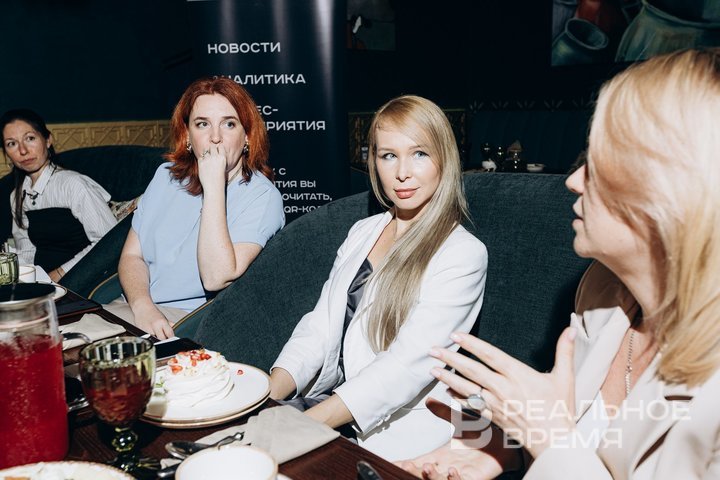
“We all now need to establish proper pricing, marketing strategies, and improve the quality of services provided.”
Irina Pylaeva admits that the price increase at Belaya Dacha is both a response to current inflation — which in real terms significantly exceeds the official figures from the Central Bank — and a necessary measure to fund payroll. The Alabuga Special Economic Zone has driven up wages in Yelabuga, and the rest of the city’s residents have adjusted their expectations accordingly. To raise salaries, sources of funding must be found, and raising service prices is simply the only option. Although Belaya Dacha is owned by Essen Production AG, it operates on a fully self-sustaining basis.
“We have to earn all of this,” explains Irina Pylaeva. “And we also have an issue with maintenance — the cost of all work has doubled. Prices for all services in Yelabuga are excessively inflated. After all, Yelabuga is not a wealthy city. Our prices for housing and services are artificially raised! Accordingly, we are forced to increase prices to stay afloat because our costs are swelling.”
It turns out that Alabuga acts like a sort of ‘magnet’, sending waves of inflation throughout small Yelabuga, while the real incomes of the city’s population outside the special economic zone objectively do not grow.